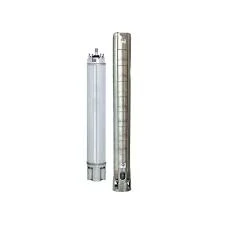Dec . 05, 2024 07:49 Back to list
Effective Solutions for Submersible Dewatering Pumps in Fluid Management Systems
Submersible Dewatering Pumps Essential Tools for Effective Water Management
Dewatering refers to the process of removing water from a specific area, often for construction, mining, or environmental management purposes. One of the most effective pieces of equipment utilized in this process is the submersible dewatering pump. These pumps operate while submerged in water, offering a reliable solution for a variety of applications where managing excess water is crucial.
What is a Submersible Dewatering Pump?
A submersible dewatering pump is a mechanical device designed to pump water from a submerged location. Unlike traditional pumps that require the fluid to be transferred to the surface through suction, submersible pumps are placed directly into the water, allowing them to push the water to the surface through a discharge pipe. This design is advantageous in many settings, as it minimizes the risk of cavitation and allows for higher efficiencies at greater depths.
Key Features and Advantages
1. Versatility Submersible dewatering pumps are highly versatile and can be used in various applications, including construction sites, flood control, mining operations, and even residential settings to eliminate water from basements or yards. They can handle both clear and dirty water, making them suitable for different scenarios.
2. Efficiency These pumps are designed for optimal performance in submerged conditions. Their unique design allows for better energy efficiency, often resulting in lower operational costs.
3. Durability Built to withstand harsh environments, submersible dewatering pumps are typically constructed from corrosion-resistant materials. This durability ensures a longer lifespan, even when exposed to abrasive or corrosive fluids.
4. Ease of Use Submersible pumps are relatively easy to install and operate. They typically require minimal maintenance, which is a significant benefit in time-sensitive or labor-intensive situations.
5. Compact Design The compact design of many submersible pumps allows them to operate effectively in tight spaces, such as trenches or poorly accessible areas. This factor is particularly important on construction sites where space can be limited.
Types of Submersible Dewatering Pumps
submersible dewatering pumps

Submersible dewatering pumps come in various types, suited for different water conditions and pumping needs
1. Clear Water Pumps These pumps are suitable for draining clean water from areas such as pools, basements, or construction sites where sediment is minimal.
2. Trash Pumps Designed to handle more substantial solids and sludge, trash pumps are ideal for construction sites dealing with muddy or contaminated water.
3. Sludge Pumps These pumps are specifically engineered to handle thicker, more viscous fluids containing high solids content, making them perfect for wastewater management.
Applications of Submersible Dewatering Pumps
Submersible dewatering pumps find use in numerous spheres, including
- Construction Essential on construction sites to keep excavations dry, which allows for safer operations and compliance with building regulations. - Mining They are crucial in mining operations, where water accumulation can impede the extraction of minerals and ores.
- Flood Control These pumps are often deployed in flood management efforts to remove excess water from affected areas quickly.
- Residential Homeowners utilize submersible pumps during heavy rains or emergencies to prevent flooding in basements and yards.
Conclusion
In conclusion, submersible dewatering pumps play a vital role in effective water management across various industries. Their efficiency, durability, and versatility make them indispensable tools in scenarios requiring water removal. As technology progresses, advancements in pump design and materials will continue to enhance their performance, making them even more reliable for tackling the challenges of water management. Whether used in construction, mining, or residential applications, submersible dewatering pumps contribute significantly to maintaining safe and dry environments, ensuring progress and protection against the dangers of excessive water.
-
Submersible Water Pump: The Efficient 'Power Pioneer' of the Underwater World
NewsJul.01,2025
-
Submersible Pond Pump: The Hidden Guardian of Water Landscape Ecology
NewsJul.01,2025
-
Stainless Well Pump: A Reliable and Durable Pumping Main Force
NewsJul.01,2025
-
Stainless Steel Submersible Pump: An Efficient and Versatile Tool for Underwater Operations
NewsJul.01,2025
-
Deep Well Submersible Pump: An Efficient 'Sucker' of Groundwater Sources
NewsJul.01,2025
-
Deep Water Well Pump: An Efficient 'Sucker' of Groundwater Sources
NewsJul.01,2025
-
 Submersible Water Pump: The Efficient 'Power Pioneer' of the Underwater WorldIn the field of hydraulic equipment, the Submersible Water Pump has become the core equipment for underwater operations and water resource transportation due to its unique design and excellent performance.Detail
Submersible Water Pump: The Efficient 'Power Pioneer' of the Underwater WorldIn the field of hydraulic equipment, the Submersible Water Pump has become the core equipment for underwater operations and water resource transportation due to its unique design and excellent performance.Detail -
 Submersible Pond Pump: The Hidden Guardian of Water Landscape EcologyIn courtyard landscapes, ecological ponds, and even small-scale water conservancy projects, there is a silent yet indispensable equipment - the Submersible Pond Pump.Detail
Submersible Pond Pump: The Hidden Guardian of Water Landscape EcologyIn courtyard landscapes, ecological ponds, and even small-scale water conservancy projects, there is a silent yet indispensable equipment - the Submersible Pond Pump.Detail -
 Stainless Well Pump: A Reliable and Durable Pumping Main ForceIn the field of water resource transportation, Stainless Well Pump has become the core equipment for various pumping scenarios with its excellent performance and reliable quality.Detail
Stainless Well Pump: A Reliable and Durable Pumping Main ForceIn the field of water resource transportation, Stainless Well Pump has become the core equipment for various pumping scenarios with its excellent performance and reliable quality.Detail
